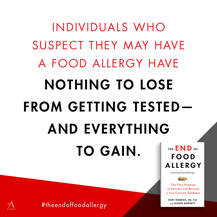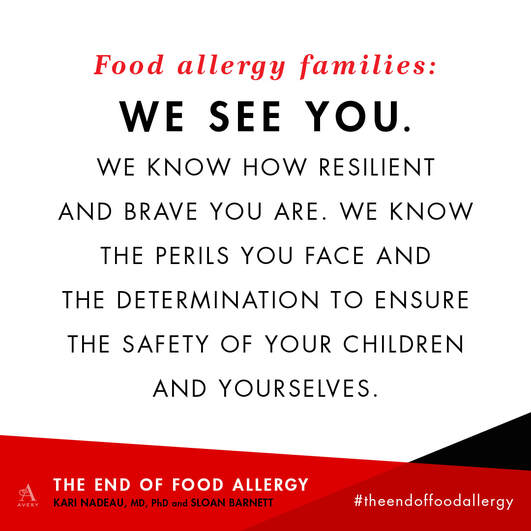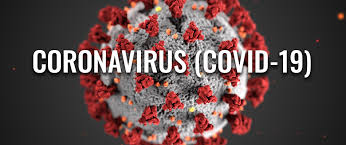Ending the threat posed by a food allergy is beneficial in so many ways. “It has changed my life totally,” says Andy Hartman, 18, a freshman at Northwestern University who underwent immunotherapy at Stanford when he was in eighth grade. He relishes family vacations that no longer revolve around keeping him safe, not having to ask about ingredients at restaurants, and being able to live in a dorm without fear. But the process included some unexpected hurdles.
One of the more unexpected emotional challenges lies with identity. For children who grow up with a food allergy, the condition often becomes part of who they are. And the more severe the allergies, the more central they are likely to be to the person’s identity. Families pursuing immunotherapy often have to wrestle with that trait.
Andy’s mother, Kim, remembers talking about this issue when he started the treatment. “We talked about kids who lose their allergies and lose their identity,” she says. Working with a therapist helped him resist that trap. Tessa Grosso remembers not wanting to admit to her parents that part of her reluctance to try immunotherapy was her attachment to the label. “Food allergies defined me,” says Tessa, who was desensitized by the time she was 10. “If I got rid of them, I wouldn’t have anything that made me unique or set me apart from anyone else.”
Treating an allergy with immunotherapy can dredge up other anxieties, too. When children have been told to avoid a food for their entire lives, it’s not that easy to suddenly try even the tiny amounts given at the start of the treatment.
Sloan’s daughter, Violet, struggled hugely with immunotherapy. She grew up allergic to all tree nuts and, when she was in fifth grade, enrolled in our first multi-allergy study. Her treatment began with shots of omalizumab, followed by a year or so of escalating doses of several different nuts. For Violet, the stretch of time between consuming her dose and having an allergic reaction was the hardest part. “It was one or two hours of knowing I’d just had a nut,” she said. She knew at some point she would throw up, but all she could do was wait. The anticipation, combined with the allergic reaction her body had to nuts— severe abdominal pain, itchiness, hives, swelling, her throat closing up— was, she says, “a lot for my 10- year- old self to handle.” Taking her doses at home was equally difficult. She would eat her nuts at 5:00 P.M. every day. “And every day at five, I would cry,” she says. “I was so scared.”
Yet she persevered. “There was no way out but through,” says Violet, now a senior in high school. The treatment worked. Now she doesn’t need to worry anymore about a life-threatening reaction from an accidental exposure to nuts during her frequent weekend trips for sports. She knows that when she goes away to college, she won’t die if she eats a nut. She has come to feel thankful for the process she once dreaded. “I had to grow up a bit,” she says, “to realize how amazing it was.
Families with internal struggles may find this time especially fraught, says Marté Matthews, a consulting therapist at Stanford University. A parent talking a child into immunotherapy may result in a messy situation for all involved. Like any pivotal moment in life, the start of treatment may unearth emotions that already existed within the family but were simmering beneath the surface. “The medical treatment of food allergy or a series of emergency room visits because of accidental exposures are going to bring out and turn up whatever those dynamics are,” says Matthews.
HOW TO HELP SOMEONE WITH FOOD ALLERGY ANXIETIES
Improvements in our understanding of anxiety have led to accompanying improvements in how we deal with it. We know better coping mechanisms and we teach them to others, including schoolchildren.
Mindfulness, breathing techniques, and other methods for calming anxieties are often taught in schools to help students monitor and manage their emotions better. As Jeanne Herzog puts it, “knowing what it feels like in our bodies and knowing what our thinking process is when we’re anxious or depressed” are the types of awareness that teachers and mental health professionals who work with children now encourage.
But the emotional burden of food allergy calls for some specific tools. Young children may be faced with social exclusion or the stigma of having to sit at the nut-free table. Older children become aware of the potential for dying as a result of accidental exposure. All people with food allergy live with the feeling of not having complete control over their safety. As Herzog explains, bullying, feeling left out, vulnerability, and all the other issues specific to food allergy have ramifications. Often, says Herzog, the result is that children with food allergy grow up faster. “They have to learn how to cope. Otherwise they will curl up in a ball and not be able to function.”
Herzog has worked with families to create what she calls emotional safety plans. These plans include coping mechanisms similar to those often recommended for anxiety, such as mind- body methods and cognitive behavioral therapy, tailored to the unique strains of food allergy. Herzog works with families to accept the challenge of the condition bravely, to empower children with knowledge, to seek support, and to find balance. Her safety plan for young children and teenagers includes several recommendations, including:
• Learn and follow your emergency care plan.
• Tell others about what your food allergy means to you.
• Be aware of your feelings so they protect you, not hinder you.
• Calm your thoughts.
• Calm your body with strategies.
• Learn all you can about yourself. Your allergy is only one thing about you.
Parents can help calm their children using gentle touch. Belly breathing— a form of deep breathing that contracts the diaphragm, which is located between the thoracic cavity and the abdominal cavity— can also help. This technique, also called diaphragmatic breathing, can slow the heartbeat and lower blood pressure.
Instilling a long-term view is also a good idea. For Matthew Friend, now 21, food allergy is still part of his life even though he’s become desensitized through immunotherapy. An aspiring comedian, he incorporates his childhood experience with a wheat allergy into his routine. He remembers disliking cheese as a child and likes to joke with his audience that whenever he wanted food that wasn’t safe for him, his mother would just tell him it had cheese in it. And having to ask a girl to brush her teeth before they kissed was, he says, “the perfect way to ensure amazing breath.”
Seventeen-year-old Ariella Nelson, who was treated in Kari’s clinic for a peanut allergy, says coping with a food allergy taught her to speak up. When she spent a summer away from home for a music program, she knew she had to be around other people as a safety precaution when she took her daily nut dose. That meant asking new friends if she could hang out in their room, a small request that took some boldness. “I would call myself a pretty assertive person,” she
says, “and I could see that coming from dealing with my tree nut allergy.” Anyone who grows up with food allergy will be shaped by the experience in some way. The trick is to find a way for that shape to be one we choose, not one imposed upon us.






 RSS Feed
RSS Feed
